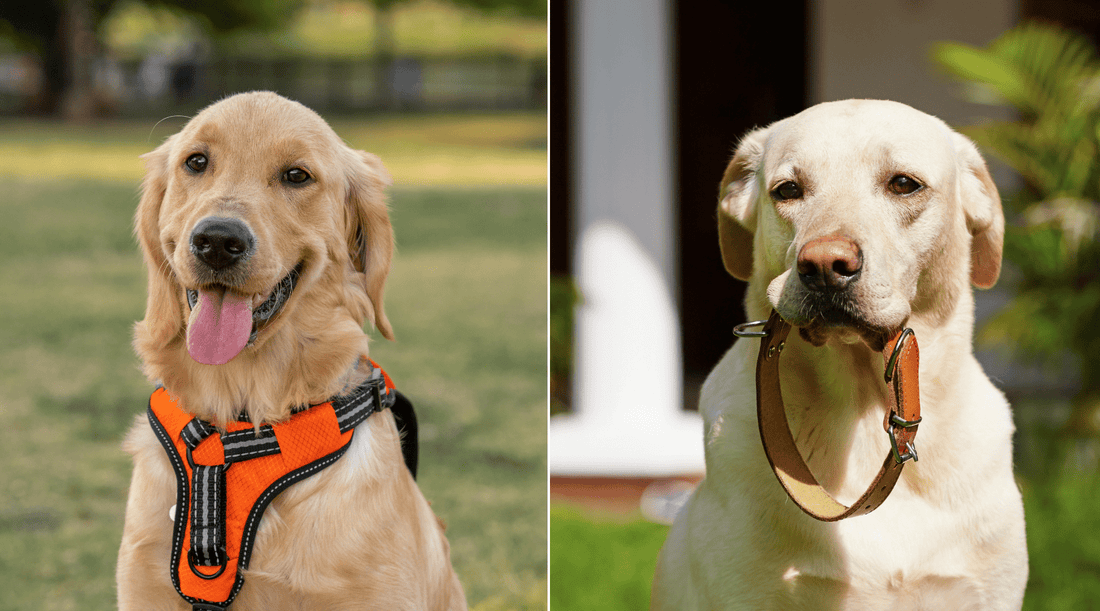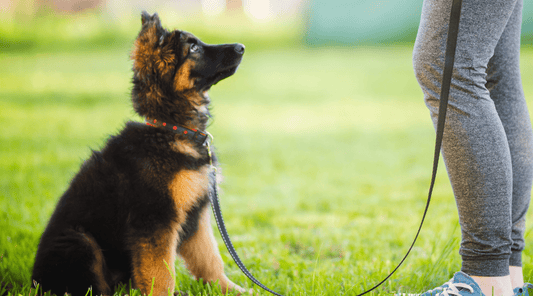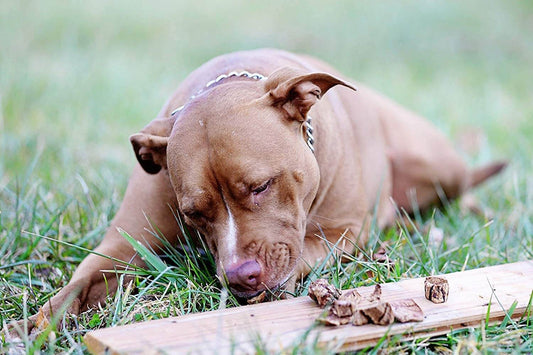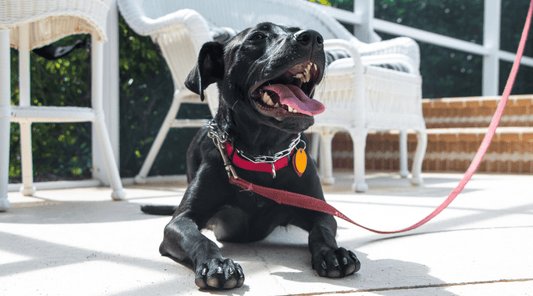
Dog Collar Vs Harness: The Right Choice for Your Canine Companion
Dawn Miller Feb 22, 20256 Minute ReadThe best training tools can make all the difference. Choosing between a dog collar vs harness for your dog depends on various factors, including breed, size, behavior, and specific needs. Understanding the pros and cons of each can help you make an informed decision that ensures your dog's comfort and safety.
Last Sunday, during our neighborhood dog walk, I noticed my friend Amanda skillfully managing her energetic rescue. He was nearly her size. Yet, she was managing him effortlessly with a harness.
While many of us use traditional collars for dog walks, Amanda appeared to have figured something out. This sparked a lively discussion: Which is better collar or harness?
See how Amanda uses a harness in positive reinforcement training:
Dog Collars Vs Harness
Pros of Dog Collars
- Easy to put on and take off, making them ideal for quick outings.
- Comfort in their minimalist design
- Can be very stylish
- Usually less expensive
- Provide a place to attach ID tags, which is crucial if your dog gets lost
- Ideal for dogs who are well-trained to stay at your side or with slack leashes in front on walks
Cons of Dog Collars
- Risk of injury for dogs that pull on leashes
- Limited control for dog parents when guiding a dog
- May detach at the worst time if using a breakaway collar
These collars I found on Amazon showcase the quality, style, and comfort I look for in a dog collar. With over 8,000 reviews and 4.5 stars, I'm not the only one who thinks so.
Made to ROAM Premium Dog Collar
But note these are quick-release, so I would not recommend them on a dog who pulls hard.
For a dog that pulls, you need a traditional clasp like one of these delightful personalized dog collars.
Pros of Dog Harnesses
- Distribute pressure across the dog's body, reducing the risk of neck injuries
- Especially beneficial for larger breeds or dogs that pull.
- More control during walks
- Easier to communicate with a dog when turning
- Front attachment designs can help train dogs not to pull
Cons of Dog Harnesses
- More complicated to put on
- Can be harder to find the right fit
- Need to adjust straps as a dog gains or loses weight
- If not fitted correctly, harnesses can cause discomfort, chafing, and, if allowed to continue, infection
Which Is Better Collar or Harness
The choice between a dog collar and a harness depends on your dog's needs. Here's a quick look at factors determining which is best for your dog.
- For Small Breeds - Harnesses are often recommended to prevent neck injuries. It's very easy to accidentally pull a small dog too hard or too fast.
- For Large Breeds - Harnesses provide better control, especially for dogs that tend to pull. They allow a smaller or less muscular person to manage a larger dog because they redirect the dog's forward momentum.
- For Training - Harnesses with front leash attachments can discourage pulling and aid in training.
When you attach the leash to the front chest area, you can pull the leash to the right or left, which will cause a dog who is trying to pull forward to feel off balance. So, they turn toward the direction you're pulling. You can use this both to stop pulling and signal which direction you want the dog to go.
If you find harnesses difficult to put on your dog, know that they get easier with a bit of practice. And it's worth it!
Harnesses can make a huge difference during walks and training, especially when you have a hyper dog.
Are Harnesses Safe for Dogs?
When properly fitted, a dog harness is the safest way to control a dog while on walks. It can also be very comfortable—like a good pair of socks for humans.
How to Choose a Harness for Your Dog
I always recommend choosing a harness that aligns with your dog's activity level. Buy quality. It will be worth it because it will last longer, especially if your dogs are active like we are.
Consider factors like adjustability, material quality, and stitching (smaller and reinforced stitches will last longer).
Regularly check for signs of wear and ensure it doesn't cause chafing or restrict movement.
What's the Best Harness for Large Dogs?
The best harnesses for large dogs will evenly distribute the pressure from pulling across the body. You also have to focus on durability. Big dogs are often strong dogs who can break flimsy harnesses.
It's also a good idea to get more padding under straps for a large dog simply because they can pull harder, and chafing can occur.
Reflective harnesses are always nice because they help drivers and bikers see us coming during early morning or dusk walks.
I only buy harnesses that allow for front-leash attachment. This will discourage pulling and is undoubtedly safer. Even if you have a small dog, back attachments can cause painful shoulder injuries.
And finally, I'm looking for breathability. Because a large dog harness needs to cover more surface area, it's important that it's not a hot material that could lead to overheating.
This harness on Amazon checks all of my boxes for a big dog harness. With 24,000 reviews and 4.5 stars, it's a crowd favorite, and it comes in many sizes, colors, and patterns: BARKBAY No Pull Dog Harness Front Clip Heavy Duty Reflective Easy Control Handle.
What's the Best Harness for Active Dogs?
Active dogs wear their harnesses a lot, so maximizing comfort is crucial. On any given day, the dogs and I walk around the neighborhood, visiting neighbors and local dog-friendly businesses, hiking, and taking trips to the lake.
A harness sees a lot of action with my dogs.
For active dogs like mine, I like this military-grade dog harness. It has extra padding and reinforced seams that show its quality. Plus, it's reflective. With over 10K reviews, it also gets 4.5 stars.
Embark Adventure Dog Harness Military Grade Nylon, Front Clip Dog Harness with Gel Lined Handle.
How to Use a Harness: Positive Reinforcement in Leash Training
Regardless of whether you choose a collar or a harness, positive reinforcement is key to effective leash training. Rewarding your dog with dog treats, like K9 Connoisseur's single-ingredient beef lung bites, encourages good behavior and strengthens your bond.
When you train with treats and praise, you build cooperation on trust, not fear. Your dog wants to work with you. But they don't always know how to do it.
Dog treats and dog bones can communicate what you want in a way dogs can easily understand.
The best training treats are single-ingredient with no weird stuff or added sugar. An authentic beef training treat or dog bone is irresistible to dogs.
My terrier Pixie will do backflips for these treats. We take the harness off for that one. Dog experts believe that our K9 companions can each learn around 120 distinct commands. A well-trained dog is a happier, healthier pup, so I encourage you to invest time in dog training.
To learn more about training dogs with positive reinforcement, don't forget to sign up for the Free 7-Day Dog Training Challenge.
Available On:





